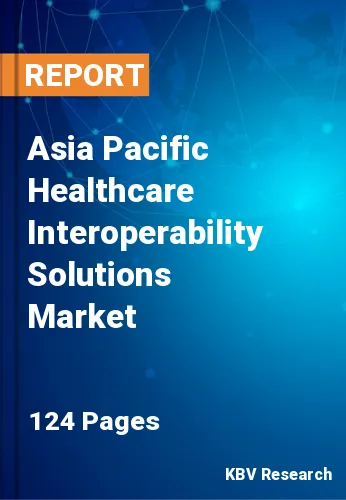The Asia Pacific Healthcare Interoperability Solutions Market would witness market growth of 14.0% CAGR during the forecast period (2023-2029).
Healthcare systems & Infrastructure to operate effectively, healthcare interoperability is crucial. However, due to its highly tailored integration, provision of individualized care, and scaling of healthcare interoperability systems, the nature of the interoperability market in healthcare is quite difficult. These problems, which are propelling the healthcare interoperability solutions market, are currently being addressed by innovators.
Furthermore, major market participants are also creating cutting-edge healthcare interoperability systems that concentrate on provider connectivity, bidirectional data exchange, and defining interoperability standards to obtain a competitive edge. Electronic health record data volume is growing quickly, making it challenging to keep it in bulk on local storage devices for fear of losing crucial information.
On the other hand, sharing large amounts of data in offline mode is challenging. As a result, adopting interoperability solutions in the healthcare sector is essential since they make it simple to share and store massive data, which fuels the market for healthcare interoperability solutions. Additionally, with fresh COVID-19 outbreaks caused by novel coronavirus strains worldwide, data interchange through healthcare interoperability systems becomes even more crucial. This fact is anticipated to accelerate the development of solutions for healthcare interoperability.
In the Asia-Pacific region, a surge in diagnostic services and a sizable metropolitan population are expected to last for upcoming years, supporting market growth. More data should be acquired due to the possibility of an increase in hospital admissions. In addition, to improve their standing nationally as well as internationally, several Indian businesses are investing in, using, and developing devices for e-clinical solutions. In the years to come, this would also contribute to expanding the market for healthcare interoperability solutions in the Asia-Pacific region.
The China market dominated the Asia Pacific Healthcare Interoperability Solutions Market by Country in 2022, and would continue to be a dominant market till 2029; thereby, achieving a market value of $540.5 million by 2029. The Japan market is estimated to grow a CAGR of 13.3% during (2023 - 2029). Additionally, The India market would experience a CAGR of 14.6% during (2023 - 2029).
Based on End User, the market is segmented into Healthcare Providers (Hospitals & Clinics, Long-term Care Centers, Diagnostic & Imaging Centers and Others), Healthcare Payers and Pharmacies. Based on level of Interoperability, the market is segmented into Structural, Foundational and Semantic. Based on Type, the market is segmented into Services and Software (EHR interoperability solutions, Lab system interoperability solutions, Imaging system interoperability solutions, Enterprise interoperability solutions, Healthcare information exchange interoperability solutions and Others). Based on countries, the market is segmented into China, Japan, India, South Korea, Singapore, Malaysia, and Rest of Asia Pacific.
Free Valuable Insights: The Worldwide Healthcare Interoperability Solutions Market is Projected to reach USD 7.5 Billion by 2029, at a CAGR of 12.9%
The market research report covers the analysis of key stakeholders of the market. Key companies profiled in the report include Oracle Corporation (Cerner Corporation), Epic Systems Corporation, Virtusa Corporation, Wipro Limited, Koninklijke Philips N.V., Veradigm, Inc., Cognizant Technology Solutions Corporation, Onyx technology LLC, Orion Health Group Limited, and InterSystems Corporation.
By End User
By level of Interoperability
By Type
By Country
Our team of dedicated experts can provide you with attractive expansion opportunities for your business.

